Do you have a question about the Autonics TCN Series and is the answer not in the manual?
| Sampling Cycle | 100 ms |
|---|---|
| Control Method | PID control |
| Input Type | Thermocouple (K, J, R, S, T, B, E, N) |
| Output Type | Relay |
| Power Supply | AC 100~240V, 50/60Hz or DC 24V |
| Communication | RS485 (Modbus RTU) |
| Control Algorithm | PID |
| Accuracy | ±0.3% of full scale ±1 digit |
| Resolution | 0.1°C/°F or 1°C/°F (selectable) |
Instructions to prevent serious injury or death, including fail-safe devices and proper installation.
Instructions to prevent minor injury or product damage, covering wiring, cleaning, and environment.
Highlights include dual display, high-speed sampling, relay/SSR output, and compact design for easy reading.
Covers polarity checks, noise prevention, power supply, heat radiation, and proper use for temperature control.
Guide to understanding the TCN4 product model number structure for ordering.
Description of the red PV display and green SV display during RUN and Setting modes.
Explains indicators like AL1/AL2, OUT, AT, and the displayed unit (°C, °F, %).
Details the function of the input keys for navigation and value setting.
Lists common error codes like OPEN, HHHH, and LLLL with their causes.
Provides guidance on checking input sensor status for troubleshooting.
Explains how to navigate between SV setting, Parameter groups, and RUN mode.
Covers settings for AL1/AL2 alarm, auto tuning, proportional band, integral, derivative, manual reset, and hysteresis.
Settings for input specification, temperature unit, filter, SV limits, control mode, and type.
Details alarm operation modes (deviation, absolute value) and option settings for latch and standby.
Configuration for SSR drive output type, LBA settings, digital input key, and parameter lock.
Describes how deviation and absolute value alarms operate based on PV, SV, and set limits.
Explains standby sequences and alarm latch behavior for different alarm conditions.
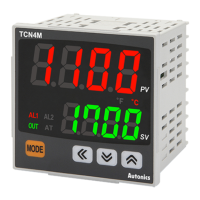
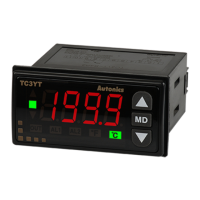
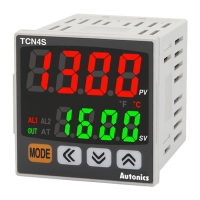



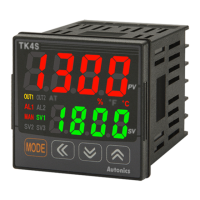




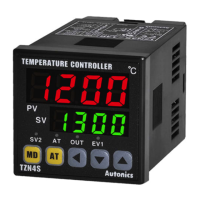
